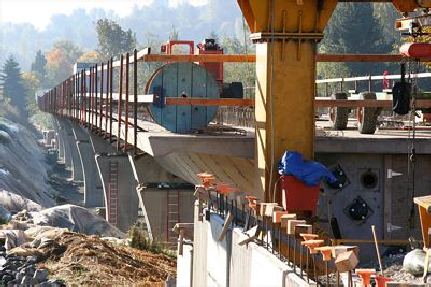No Light Rail in Vancouver!
Winston and Maheshri examine 25 light-
Supposedly, we build rail transit to “get people out of their automobiles,” as if
that is a worthwhile goal. Whether worthwhile or not, it hasn’t worked. In 1970,
when all but eight American cities had converted their rail transit systems to buses,
the census found that 3.1 percent of American commuters took rail transit to work.
By 2000, after fifteen urban areas had built brand-
Well before the Winston-
I think Warner is correct. But, possibly unlike Warner, I think that a more detailed analysis would conclude that all U.S. rail systems, including commuter rail and BART, are socially undesirable.
Warner says that the paper’s “treatment of pollution reduction benefits is intellectually questionable.” I agree; the paper gives pollution a short shrift. As the Antiplanner has shown, most transit systems that include some form of rail transit consume more energy and emit more greenhouse gases, per passenger mile, than the average passenger automobile. The evidence available also suggests that rail transit systems emit more nitrogen oxides (a precursor of ozone smog) and particulates than automobiles.
My analysis did not include many of the recent commuter-
Warner also says that the paper does “not include alternative costs of transportation
for non-
San Francisco is an excellent example. Thanks to the high cost of the BART system, the Bay Area’s bus systems have suffered limited funding. As a result, since 1980, the bus systems have lost far more riders than BART has gained. As the Antiplanner has shown elsewhere, most rail systems in the country have suffered similar losses of bus riders.
This is a huge equity issue. As Winston notes in his book, Alternate Route, the average
income of rail riders is 25 percent greater than the average income of bus riders.
Rail riders are much more likely to be “choice” riders — people who have cars who
decide to take transit — while a much larger share of bus riders are transit-
Then there is safety. Heavy rail, which operates in exclusive rights of way, is safe. But light rail and commuter rail both kill more people, per passenger mile carried, than automobiles on urban streets and highways.
Finally, there is the urban-
So rail transit does not get people out of their automobiles or cost-
At $170 million, the cost of building each mile of Seattle’s new light-
Flickr photo by brewbooks.

On the Desirability of Rail Transit
Rail transit is a waste of money, and what little benefit it provides in the form of congestion relief is far exceeded by its cost. That is the Antiplanner’s general opinion, and it is shared by economists Clifford Winston, of the Brookings Institution, and Vikram Maheshri, of UC Berkeley.
The two have written a paper, On the Social Desirability of Urban Rail Transit Systems, that has been circulating around the Internet for awhile (and was previously mentioned by the Antiplanner). Now it is being published in the Journal of Urban Economics.